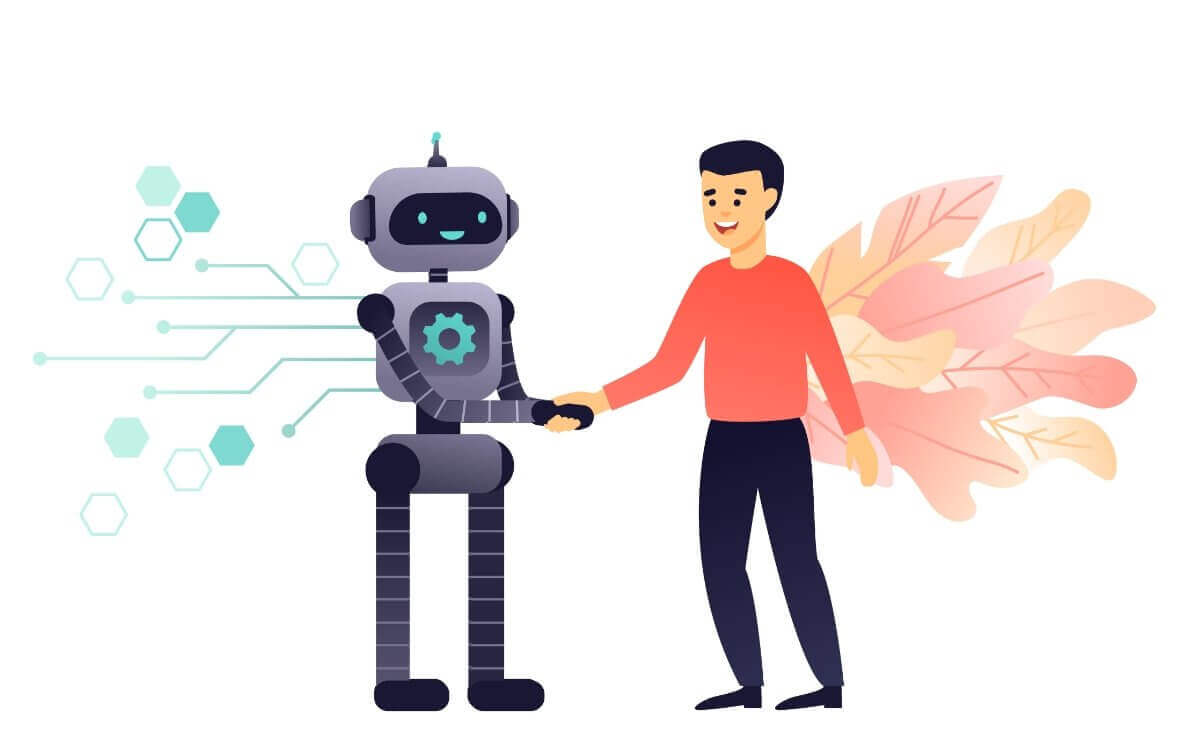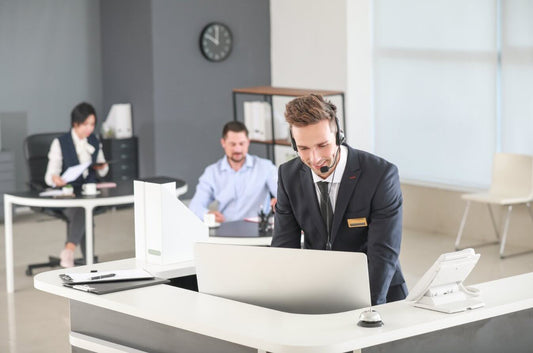
What is Industry 4.0 and 5.0? Video Guide
The digital transition still represents a challenge for many companies today. However, it is clear that progress has not stopped since the start of the first industrial revolution in the 18th century. If manufacturers and their partners are immersed in the development of new tools and processes using new technologies, the basic principle of industry 4.0, you should know that the next phase of industrialization is already upon us. our doors. What are the principles of Industry 5.0? What are the differences between these two levels? We take stock in this article.
The characteristics of industry 4.0
Industry 4.0 , a pillar of the modern industrial revolution, is characterized by the creation of intelligent, interconnected factories, in which employees, machines and systems are linked. This concept follows in particular the collapse of the barriers between the physical world and the digital universe, which allows a convergence of industrial production techniques and new digital technologies. The latter embody an essential point for any digitalization: IoT platforms, 3D printing, cloud computing, augmented reality, smart data for predictive maintenance, etc.
Industry 4.0 is thus based on a partially cyber-physical system, which allows intelligent production and supply, including on a multi-product level, which remains at limited capacity. However, it seeks to keep people at the center of its action plan, in particular through the renewal of processes which guarantee the ergonomics, value and safety of each position. It is therefore human management which intervenes in the context of interactions between the customer, the product and the machine. Industry 4.0 in no way aims to replace humans, but to facilitate and optimize cooperation between man and machine.
The characteristics of industry 5.0
The principles of Industry 5.0 are a logical continuation of those of Industry 4.0. This advanced digitalization would thus embody the next stage in the evolution of manufacturing, in particular by offering autonomous production and supply in factories. At its core is a global cyber-physical system, which uses autonomous cognitive agents to manage interactions between customer, product and machine. Industry 5.0 combines the strengths of intelligent machines, robots and humans, for an ultra-flexible production system aimed at absorbing product and demand variability. It allows cognitive computing capabilities to be merged with human intelligence, ingenuity and creativity in 100% collaborative operations. It also guarantees optimized quality and costs, as well as a reduction in waste (through prevention and recycling) and energy expenditure. In addition, Industry 5.0 offers faster delivery for a more versatile, more ecological product and above all personalized according to customer expectations.

At this point, however, it is essential to clarify that the ultimate goal of Industry 5.0 is not to replace humans. The rise of robotics, and the multiple possibilities that result from it, are all means and solutions available to manufacturers for the digital transition of their industries. Even if robots provide precise and perfectly carried out work according to their initial settings, they remain inflexible, and possess neither the capacity for adaptation nor the critical mind which remain the prerogative of human beings. They thus fulfill a dual mission of assistance and collaboration, but which in no way aims to replace workers. Once freed from painful or repetitive tasks on the production line, they can then concentrate on the essential points of propulsion of their business, and more particularly the services offered, as well as the environmental and social issues linked to them. Humans also play a learning and supervisory role with respect to the machines and cognitive agents that operate at the heart of the connected factory, in particular thanks to their skills in programming and controlling intelligent systems. It is thus placed at the center of the manufacturing process. The ethical use of technology for the advancement of human values and needs is finally at the top of the principles of Industry 5.0.
Industry 5.0 therefore aims to find an ideal balance between efficiency and productivity, while interconnecting machines, processes and systems for maximum performance optimization. It pushes the limits and places itself on the horizon of the manufacturing system, in a perfect fusion between artificial intelligence and human creativity. It therefore brings its share of advantages and strengths, but also challenges and questions that our teams at Digital Factory will be happy to clarify for you during a future discussion!

Industry 5.0 therefore aims to find an ideal balance between efficiency and productivity, while interconnecting machines, processes and systems for maximum performance optimization. It pushes the limits and places itself on the horizon of the manufacturing system, in a perfect fusion between artificial intelligence and human creativity. It therefore brings its share of advantages and strengths, but also challenges and questions that our teams at Digital Factory will be happy to clarify for you during a future discussion!
Key Steps for Implementing Industry 5.0
On paper, Industry 5.0 has everything going for it, but the transition won't happen overnight. It requires careful planning and gradual implementation, since a first phase of conversion to industry 4.0 is essential .

1. Inventory
The first step in deploying Industry 5.0 consists of carrying out a complete inventory of physical and information flows within the company's ecosystem. This involves the analysis of suppliers, customers, products, environment, and internal departments such as purchasing, R&D and industrialization. The objective is to obtain a global vision of manufacturing, identify areas for improvement and spot opportunities offered by new technologies. Defining measurement indicators for each step ensures precise analysis and decision-making based on concrete data.
2. Design of ideal flows
The second step involves imagining ideal information and physical flows based on the criteria of cost, quality, deadlines, and environment. Digital modeling tools make it possible to visualize and analyze existing flows and target flows, requiring close collaboration between the parties involved. The definition of measurable performance indicators serves to evaluate the success of the different scenarios considered, while the projection over time makes it possible to anticipate the future impacts of the decisions taken.
3. Choice of technologies
The third step consists of researching existing technologies relevant to each flow, followed by the study of their feasibility by simulating different solutions. The use of Artificial Intelligence tools accelerates the analysis of possible solutions. The integration of AI between the R&D department and Industrialization allows the analysis of product/process data and the proposal of optimized solutions. It is crucial to define the key functionalities and acceptance criteria for the success of this operation.
4 Action plan
The fourth step is to establish an action plan to implement the new flow. This includes estimated costs, timelines, required resources, and key performance indicators to track implementation progress. Defining priorities, collaborating with the parties involved, and including a testing phase ensures the new flow works properly. The post-implementation monitoring and maintenance phase guarantees the sustainability of the deployed system.
5. Implementation of autonomous cognitive agents
The implementation of autonomous cognitive agents in a flow is carried out in several stages, including the definition of the roles and responsibilities of the agents, the development of the AI for each agent, their integration into the physical and IT flow, the training of agents, testing and validation in real or simulated conditions, and finally, deployment in the production flow. Deep expertise in AI and workflow management is essential for this transition.
6. Data collection and analysis
To successfully implement a new flow adapted to Industry 5.0, it is imperative to take into account aspects related to data collection and analysis. This involves establishing effective data collection systems, creating bridges of connections between system elements, and combining them with multi-agent AI systems for data analysis and decision-making. These elements strengthen the system's ability to adapt to the requirements of the industry of the future .
To deepen your knowledge on industry 4.0 and 5.0, do not hesitate to consult our C1/ebook: From vision to action: the future of the industry .
Explore now our complete support offer towards the industry of the future . Our team of experts is ready to guide you through the crucial steps of the transition to Industry 5.0. Do not hesitate to contact us for a personalized consultation. Together, let's optimize your processes and take full advantage of the opportunities offered by this new industrial era.




1 comment
Merci pour cette comparaison très précise de ces deux entités numérique qui peuvent également représenter des solutions pour la supply chain de demain.